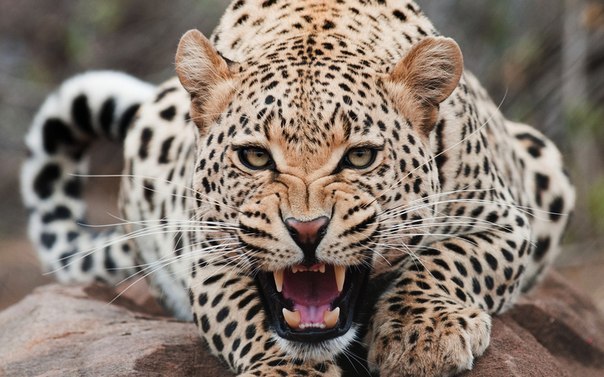Pics Of Animals Biography
Source Link Goggle.com.pkAn endangered (EN) species is one which has been categorised by the International Union for Conservation of Nature as likely to become extinct. Conservation biologists use the IUCN Red List, where "endangered" is the second most severe conservation status for wild populations, following critically endangered.The conservation status of a species indicates the likelihood that it will become extinct. Many factors are considered when assessing the conservation status of a species; e.g., such statistics as the number remaining, the overall increase or decrease in the population over time, breeding success rates, or known threats.[2] The IUCN Red List of Threatened Species is the best-known worldwide conservation status listing and ranking system.
Over 40% of species are estimated to be at risk extinction.[4] Internationally, 199 countries have signed an accord to create Biodiversity Action Plans that will protect endangered and other threatened species. In the United States this plan is usually called a species Recovery Plan.IUCN Red List refers to a specific category of threatened species and may include critically endangered species. The IUCN Red List uses the term endangered species as a specific category of imperilment, rather than as a general term. Under the IUCN Categories and Criteria, endangered species is between critically endangered and vulnerable. Also critically endangered species may also be counted as endangered species and fill all the criteria.
The more general term used by the IUCN for species at risk of extinction is "threatened species", which also includes the less-at-risk category of vulnerable species together with endangered and
IUCN categories, and some animals in those categories, include:Some endangered species laws are controversial. Typical areas of controversy include: criteria for placing a species on the endangered species list and criteria for removing a species from the list once its population has recovered; whether restrictions on land development constitute a "taking" of land by the government; the related question of whether private landowners should be compensated for the loss of uses of their lands; and obtaining reasonable exceptions to protection laws. Also lobbying from hunters and various industries like the petroleum industry, construction industry, and logging, has been an obstacle in establishing endangered species laws.
The Bush administration lifted a policy that required federal officials to consult a wildlife expert before taking actions that could damage endangered species. Under the Obama administration,
Being listed as an endangered species can have negative effect since it could make a species more desirable for collectors and poachers.[8] This effect is potentially reducible, such as in China where commercially farmed turtles may be reducing some of the pressure to poach endangered
Another problem with the listing species is its effect of inciting the use of the "shoot, shovel, and shut-up" method of clearing endangered species from an area of land. Some landowners currently may perceive a diminution in value for their land after finding an endangered animal on it. They have allegedly opted to silently kill and bury the animals or destroy habitat, thus removing the problem from their land, but at the same time further reducing the population of an endangered species.[10] The effectiveness of the Endangered Species Act, which coined the term "endangered species", has been questioned by business advocacy groups and their publications, but is nevertheless widely recognized as an effective recovery tool by wildlife scientists who work with the species. Nineteen species have been delisted and recovered[11] and 93% of listed species in the northeastern United States have a recovering or stable population.[12]
Currently, 1,556 known species in the world have been identified as endangered, or near extinction, and are under protection by government law (Glenn, 2006, Webpage). This approximation, however, does not take into consideration the number of species threatened with endangerment that are not included under the protection of such laws as the Endangered Species Act. According to NatureServe's global conservation status, approximately thirteen percent of vertebrates (excluding marine fish), seventeen percent of vascular plants, and six to eighteen percent of fungi are considered imperiled (Wilcove & Master, 2008, p. 415-416). Thus, in total, between seven and eighteen percent of the United States' known animals, fungi, and plants are near extinction (Wilcove & Master, 2008, p. 416). This total is substantially more than the number of species protected under the Endangered Species Act in the United States.Over-hunting and over-fishing have been a problem ever since mankind started to hunt, and it is no different today. Animals like the bald eagle, grizzly bear, American bison, timber wolf, and sea turtles have all been hunted nearly to extinction, and these are the lucky ones. Others such as the dodo, passenger pigeon, great auk, and Stellar’s sea cows were not as lucky as they were hunted to extinction. All of these animals started off as a food source or ones almost necessary for survival, but the need turned into greed and sport and the populations of these animals were greatly depleted. A present day example of the over-hunting of a species can be seen in the oceans as populations of certain whales have been greatly reduced. Large whales like the blue whale, bowhead whale, finback whale, gray whale, sperm whale, and humpback whale are some of the eight whales which are currently still included on the Endangered Species List. Actions have been taken to try to reduce whaling and increase population sizes, including prohibiting all whaling in United States waters, the formation of the CITES treaty which protects all whales, along with the formation of the International Whaling Commission (IWC). But even though all of these movements have been put in place, countries like Japan claim that they are whaling for “scientific” purposes and continue to harvest whales.[13] Over-hunting,climatic change and habitat loss leads in landing species in endangered species list and could mean that extinction rates could increase to a large extent in the future.Whereas poaching substantially reduces endangered animal populations, legal, for-profit, private farming does the opposite. It has substantially increased the populations of the southern black rhinoceros and southern white rhinoceros. Dr Richard Emslie, a scientific officer at the IUCN, said of such programs, "Effective law enforcement has become much easier now that the animals are largely privately owned... We have been able to bring local communities into the conservation programmes. There are increasingly strong economic incentives attached to looking after rhinos rather than simply poaching: from Eco-tourism or selling them on for a profit. So many owners are keeping them secure. The private
Conservation experts view the effect of China's turtle farming on the wild turtle populations of China and South-Eastern Asia—many of which are endangered—as "poorly understood".[17] Although they commend the gradual replacement of wild-caught turtles with farm-raised turtles in the marketplace (the percentage of farm-raised individuals in the "visible" trade grew from around 30% in 2000 to around 70% in 2007),[18] they worry that many wild animals are caught to provide farmers with breeding stock. The conservation expert Peter Paul van Dijk noted that turtle farmers often believe that wild-caught animals are superior breeding stock; turtle farmers may therefore seek and catch the very last remaining wild specimens of some endangered turtle
In 2009, researchers in Australia first coaxed southern bluefin tuna to breed in landlocked tanks, enabling fish farming to save the species from overfishing.[19]
3079 animals and 2655 plants are endangered worldwide, compared with 1998 levels of 1102 and 1197, respectively.[1] The amount, population trend, and conservation status of each species can be found in the lists of organisms by population.
Many nations have laws that protect conservation reliant species: for example, forbidding hunting, restricting land development, or creating preserves.
Pics Of Animals Animals PHotos Images Mating With Down Syndrome With Names To Draw In The Rainforest Wallpapers With Human Teeth
Pics Of Animals Animals PHotos Images Mating With Down Syndrome With Names To Draw In The Rainforest Wallpapers With Human Teeth
Pics Of Animals Animals PHotos Images Mating With Down Syndrome With Names To Draw In The Rainforest Wallpapers With Human Teeth
Pics Of Animals Animals PHotos Images Mating With Down Syndrome With Names To Draw In The Rainforest Wallpapers With Human Teeth
Pics Of Animals Animals PHotos Images Mating With Down Syndrome With Names To Draw In The Rainforest Wallpapers With Human Teeth
Pics Of Animals Animals PHotos Images Mating With Down Syndrome With Names To Draw In The Rainforest Wallpapers With Human Teeth
Pics Of Animals Animals PHotos Images Mating With Down Syndrome With Names To Draw In The Rainforest Wallpapers With Human Teeth
Pics Of Animals Animals PHotos Images Mating With Down Syndrome With Names To Draw In The Rainforest Wallpapers With Human Teeth
Pics Of Animals Animals PHotos Images Mating With Down Syndrome With Names To Draw In The Rainforest Wallpapers With Human Teeth
Pics Of Animals Animals PHotos Images Mating With Down Syndrome With Names To Draw In The Rainforest Wallpapers With Human Teeth
Pics Of Animals Animals PHotos Images Mating With Down Syndrome With Names To Draw In The Rainforest Wallpapers With Human Teeth









No comments:
Post a Comment